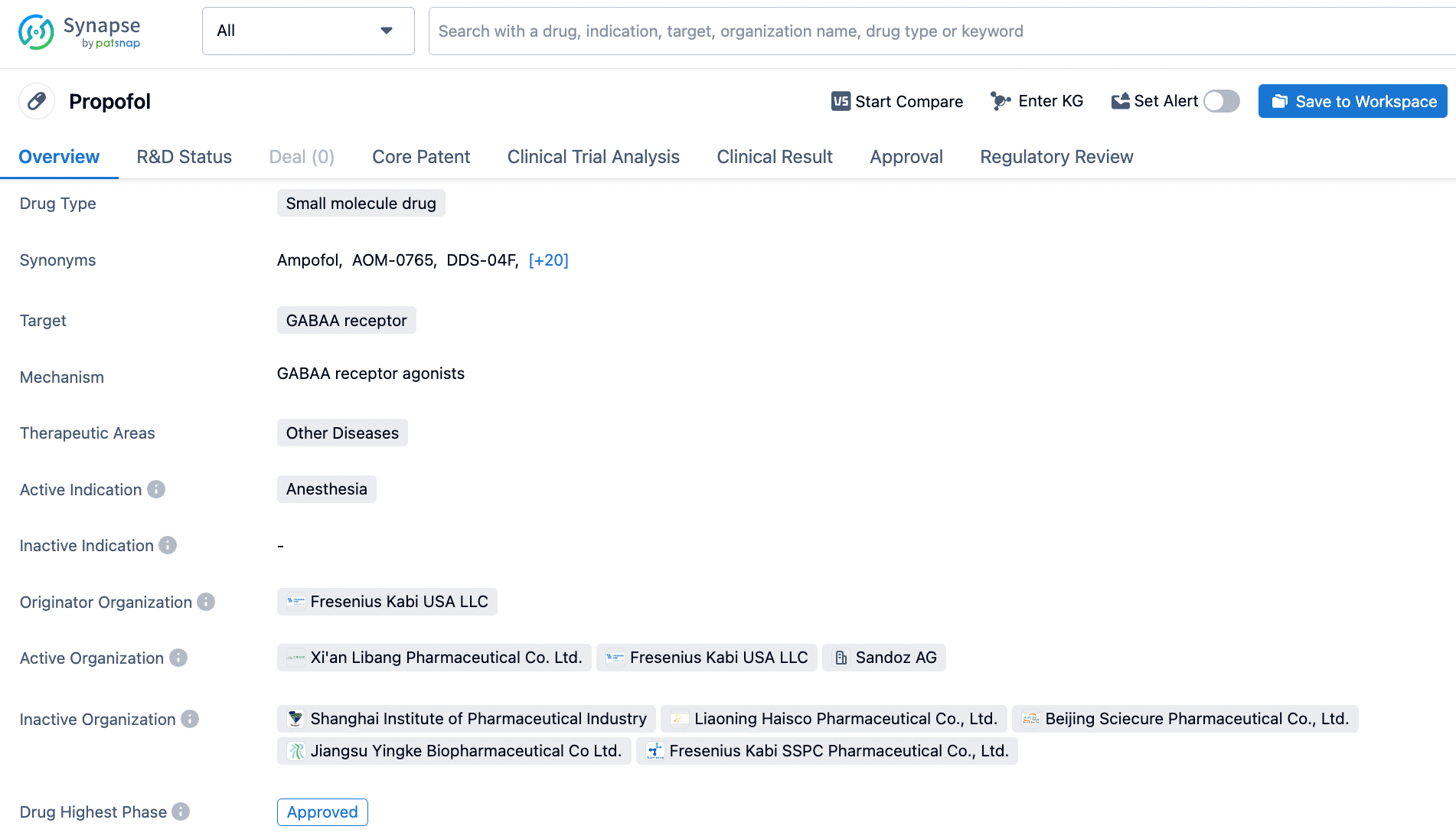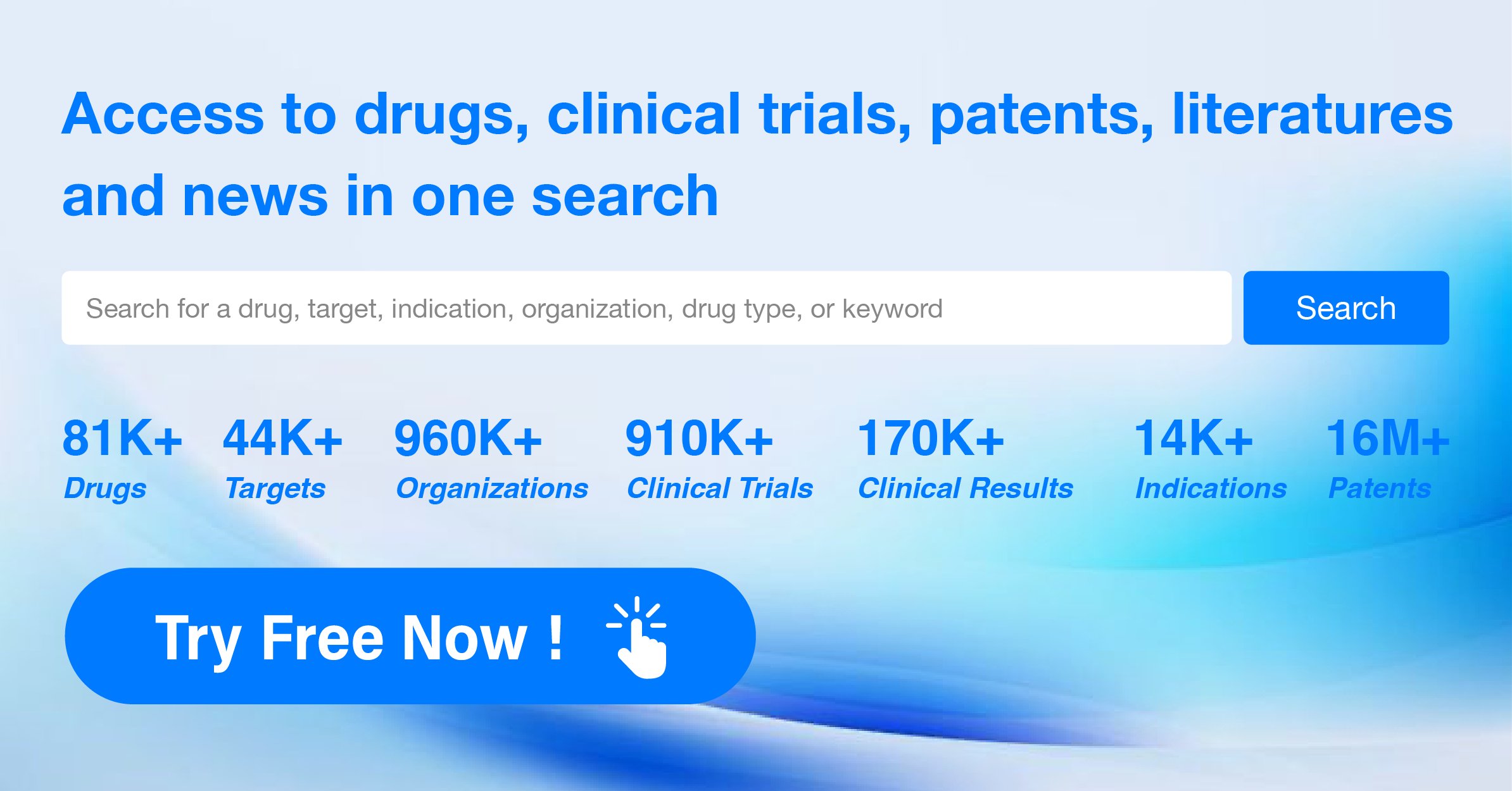The Synapse User's Toolkit: Tips for Searching Propofol
Propofol, an agonist of the GABAA receptor, is a small molecule drug primarily used for anesthesia. Originating from AstraZeneca, propofol gained approval for use in October 1989. Due to its quick onset and short duration of action, propofol has become a popular sedative-hypnotic agent for both induction and maintenance of anesthesia. In addition to its anesthetic properties, propofol has been found to have antiemetic properties and can be used as an adjunct therapy for postoperative nausea and vomiting. While propofol offers therapeutic benefits, it also has a potential for misuse and abuse due to its ability to induce deep sedation or unconsciousness at high doses. Despite its established uses, the precise mechanism of action of propofol is not yet fully understood, and further research is needed to elucidate its pharmacology. Click on the image below to begin the exploration journey of Propofol through the Synapse database!
You can search for the latest pharmaceutical information such as drugs, targets, patents, transactions, clinical results, etc. through the Synapse database. Come and experience it!





